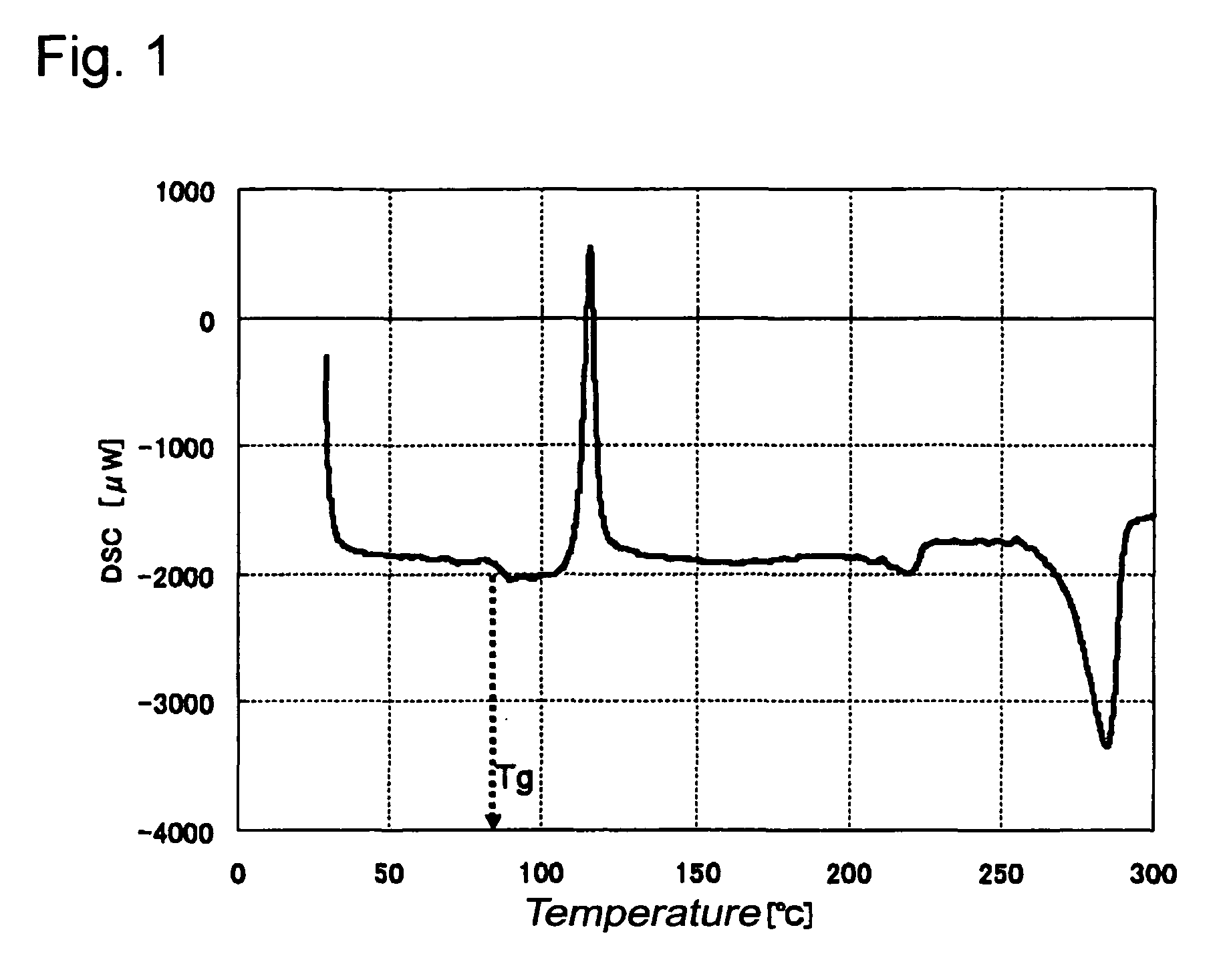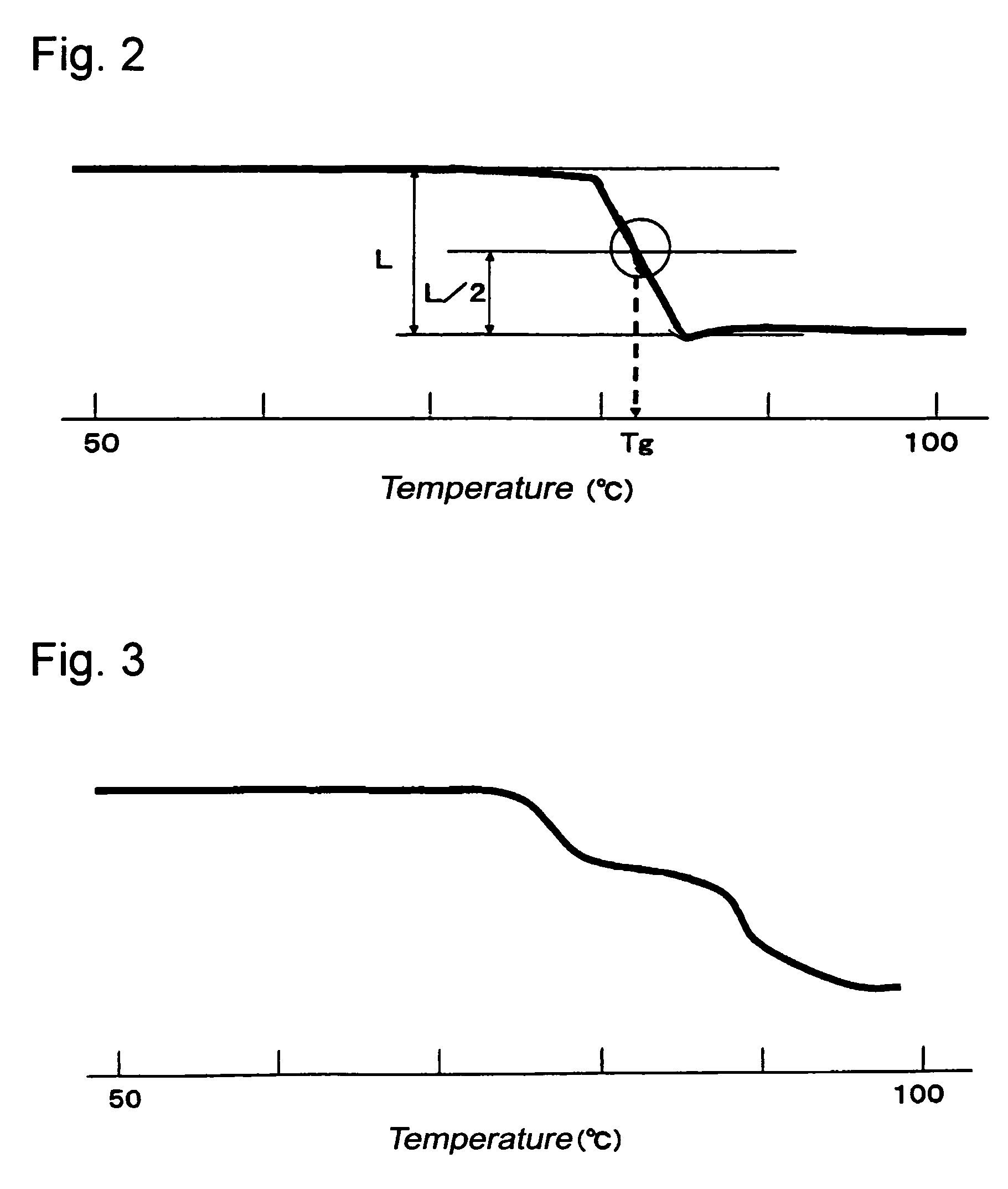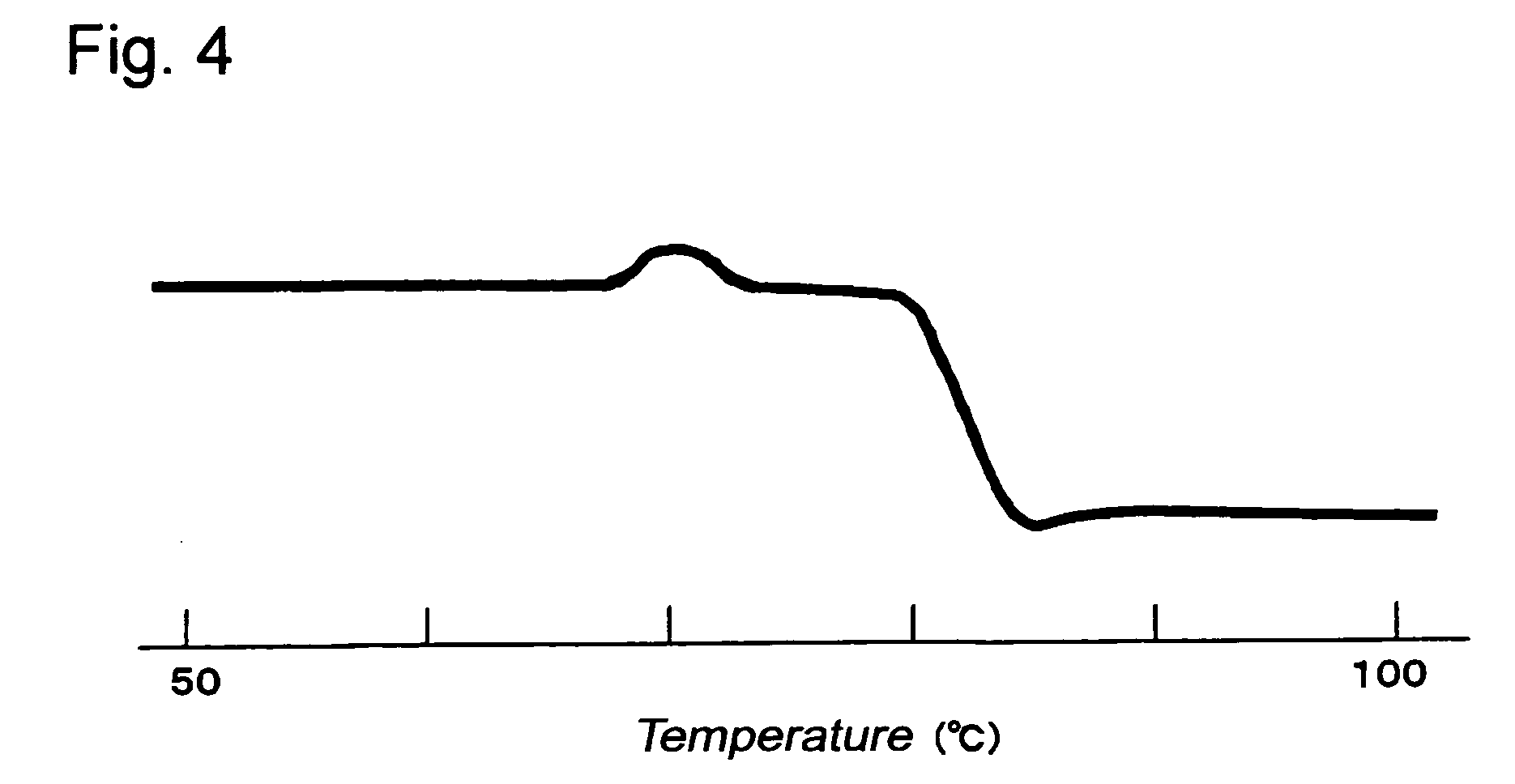Resin composition, molded component, electrophotographic transfer film and image-forming apparatus
a polyphenylene sulfide resin and composition technology, applied in the field of polyphenylene sulfide resin composition and molded components, can solve the problems of insufficient toughness of pps resin in comparison, inability to provide effective methods for improving strength properties, and inability to achieve high modulus of elasticity, etc., to achieve superior toughness
- Summary
- Abstract
- Description
- Claims
- Application Information
AI Technical Summary
Benefits of technology
Problems solved by technology
Method used
Image
Examples
example 1
[0084]A mixture of PPS (polyphenylene sulfide: made by Toray Industries, Inc.) (84 kg), MXD6 (made by Mitsubishi Gas Chemical Co., Inc.) (6 kg) and acidic carbon (made by Degussa Corp.) (10 kg) was melt-kneaded by a twin-screw extrusion-kneader at 310° C. with the number of screw revolutions of 350 rpm, and the kneaded matter was then immersed in water at 25° C. to be quickly cooled and pulverized to obtain a resin compositional (first melt-kneading process). The resin compositional thus obtained was measured on Tg, and virtually the same graph as that of FIG. 1 was obtained so that only one Tg was observed at 87° C. After the resin compositional had been extrusion-molded at 310° C. by using a molding machine to which an annular metal mold die was attached, the resulting molded product was immersed in water at 30° C. to be quickly cooled so that an intermediate transfer belt (thickness: 0.1 mm) having a seamless annular shape was obtained (molding process). The surface resistivity a...
example 2
[0085]A mixture of PPS (polyphenylene sulfide: made by Toray Industries, Inc.) (84 kg), MXD6 (made by Mitsubishi Gas Chemical Co., Inc.) (4 kg) and acidic carbon (made by Degussa Corp.) (10 kg) was melt-kneaded by a twin-screw extrusion-kneader at 310° C. with the number of screw revolutions of 350 rpm, and the kneaded matter was then immersed in water at 25° C. to be quickly cooled and pulverized to obtain a resin composition b1 (first melt-kneading process). The resin composition b1 thus obtained was measured on Tg, and virtually the same graph as that of FIG. 1 was obtained so that only one Tg was observed at 89° C. After the resin composition b1 had been extrusion-molded at 310° C. by using a molding machine to which an annular metal mold die was attached, the resulting molded product was made in contact with a sizing die at 30° C. to be quickly cooled so that an intermediate transfer belt (thickness: 0.1 mm) having a seamless annular shape was obtained (molding process). The su...
example 3
[0086]A mixture of PPS (polyphenylene sulfide: made by Toray Industries, Inc.) (84 kg), 4,6-nylon (made by DSM Japan Engineering Plastics) (6 kg) and acidic carbon (made by Degussa Corp.) (10 kg) was melt-kneaded by a twin-screw extrusion-kneader at 300° C. with the number of screw revolutions of 350 rpm, and the kneaded matter was then immersed in water at 25° C. to be quickly cooled and pulverized to obtain a resin composition c1 (first melt-kneading process). The resin composition c1 thus obtained was measured on Tg, and virtually the same graph as that of FIG. 1 was obtained so that only one Tg was observed at 87° C. After the resin composition c1 had been extrusion-molded at 310° C. by using a molding machine to which an annular metal mold die was attached, the resulting molded product was made in contact with a sizing die at 25° C. to be quickly cooled so that an intermediate transfer belt (thickness: 0.1 mm) having a seamless annular shape was obtained (molding process). The ...
PUM
| Property | Measurement | Unit |
|---|---|---|
| glass transition temperature | aaaaa | aaaaa |
| glass transition temperature | aaaaa | aaaaa |
| temperature | aaaaa | aaaaa |
Abstract
Description
Claims
Application Information
 Login to View More
Login to View More - R&D
- Intellectual Property
- Life Sciences
- Materials
- Tech Scout
- Unparalleled Data Quality
- Higher Quality Content
- 60% Fewer Hallucinations
Browse by: Latest US Patents, China's latest patents, Technical Efficacy Thesaurus, Application Domain, Technology Topic, Popular Technical Reports.
© 2025 PatSnap. All rights reserved.Legal|Privacy policy|Modern Slavery Act Transparency Statement|Sitemap|About US| Contact US: help@patsnap.com



